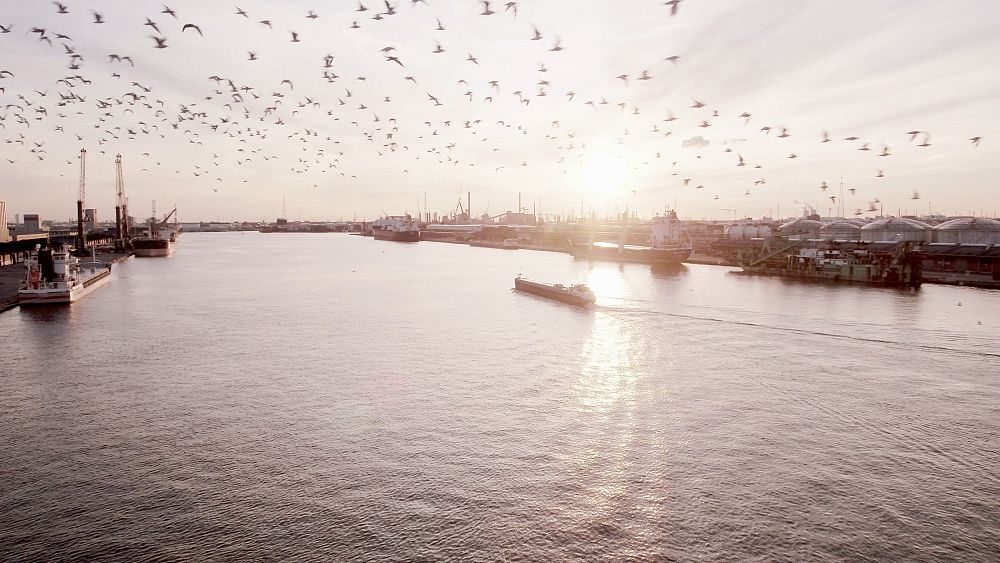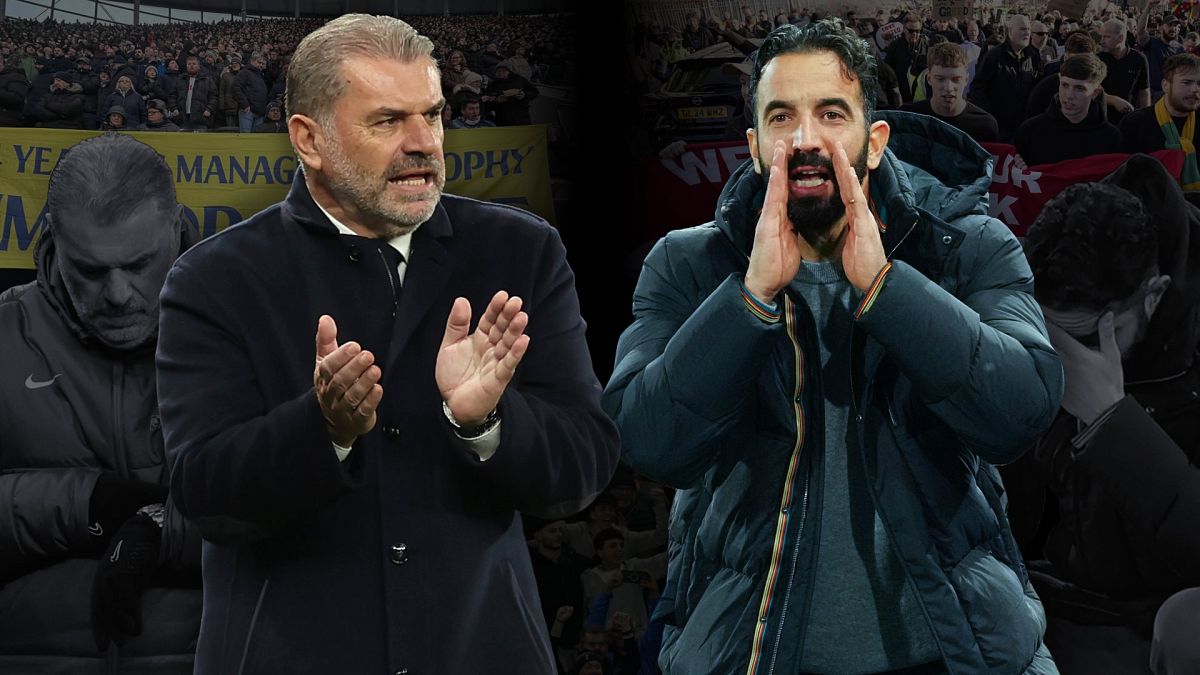Port behind 10% of Belgium’s CO₂ emissions adopts carbon-slashing tech

A carbon footprint heavyweight, Antwerp-Bruges aims to reinvent itself as the world’s most sustainable port. Emerging tech can make it possible.
Ports are the heart of our global trade, connecting the world and fuelling economic growth. But with this power comes a problem: ports have a massive carbon footprint.
Wind power
Even prior to its recent merger with the port of Antwerp, Zeebrugge in Belgium held the title of the world’s top car handling port. The large ships that dock here generate their electricity by burning fuel. But in the near future, these ships will be able to connect to clean energy from numerous new wind turbines — a more sustainable solution, perfect for the windiest area of Belgium.
“The first wind turbines ever in Europe were located here in Zeebrugge,” says Dries De Smet, Sustainable Energy Advisor, Port of Antwerp-Bruges. “So we have always been a pioneer on that side. These 54 wind turbines, they supply 100,000 of households with green energy. Of course, a lot of this energy gets consumed by the terminals and the companies directly, which makes sure that they can perform actually a lot of their activities without emitting CO₂.”
Sustainability goals bring economic benefits
The merged port of Antwerp and Bruges — one of the largest in Europe — has the ambition to become one of the most sustainable ports in the world.
The Antwerp Euroterminal (AET) switched to LED lights, covers roofs with solar panels, and washes containers and cars with collected rainwater — all that in addition to the wind power.
The wind in Antwerp isn’t very consistent and the sun doesn’t always shine, but the terminal copes with that by using new battery storage — a part of the PIONEERS project backed by the European Union. The managing director Yves De Larivière says the terminal now gets 86% of its energy from green sources, resulting in more predictable operating costs.
“We immediately see the effects by using renewable energy, because the electricity prices went sky-high in the past year, so we immediately are benefiting from all the efforts we are doing,” he says. “Our customers are asking to show our ecological footprint. So even if there is no business case today, tomorrow it will be a business case. I think and I hope that we will be ready.”
Maintaining competitivity
The Port of Antwerp-Bruges contributes 4.5% to the Belgian GDP and provides over 160,000 jobs through its cargo terminals, distribution centres, and Europe’s biggest chemical cluster. Its CO₂ emissions amount to 17 million tons each year — a challenge that the port aims to overcome and become carbon-neutral by 2050.
“We have a huge carbon problem here,” says Guy Janssens, chief of corporate affairs at the Port of Antwerp-Bruges. “We are, let’s say, more than 10% of the carbon footprint of Belgium. We are a highly energy-intensive platform with a lot of fuel needs, a lot of electricity needs, feedstock needs and heat needs. Of course, our main ambition is to remain the same world-class competitive platform, but with a net-zero impact on the long term.”
Alternative fuels
One of the ways towards achieving that goal is by capturing, storing and reusing CO₂ from the industry.
Another possible solution — shifting from fossil fuels to alternatives like hydrogen, which can be produced with renewable energy sources to be CO₂-neutral. In the future, the port aims to become an international hub for “green hydrogen” that can replace fossil energy sources in many industrial applications.
The PSA container terminal is already experimenting with alternative fuels including hydrogen. Containers here are moved by more than 100 vehicles called “straddle carriers”. Together, their diesel engines produce substantial emissions.
As part of the PIONEERS project, the terminal and its partner CMB.TECH are upgrading one of the straddle carriers with a hybrid system that combines diesel with hydrogen, which lowers overall emissions.
The experiment will show how this technology can be scaled up.
“So the method that we are demonstrating here is what we call dual fuel technology,” says Bart Paijmans, Sustainable solutions manager at Antwerp Terminal Services. “So we actually mix hydrogen and diesel into the existing engine. The dual fuel application allows us to use the existing machines, but it also allows us to gradually build up the hydrogen infrastructure. We don’t have that today. And that means that if there is a problem in the supply of hydrogen, we still have the option to fall back to diesel.”
International co-operation
Coordinated at the Port of Antwerp-Bruges, the PIONEERS project also involves the ports of Barcelona in Spain, Constanta in Romania, and Venlo in the southern Netherlands. The project’s goal is to demonstrate different strategies that ports can use to decrease their environmental impact while staying competitive — in line with the objectives of the European Green Deal. Inge De Wolf is the project coordinator.
“Each port offers a unique port ecosystem where we can learn from each other, also through the interaction with the port community, port stakeholders,” she says. “We will be focusing, for example, on clean energy production and supply, and sustainable port design. We will also be looking at the modal flows, modal shift flows optimization of both goods and passengers, and also digital transformation. So by the end of the project, we have the ambition to deliver a green port masterplan that can be used for ports across Europe and beyond.”
Digital technologies
Digital technologies can enhance port efficiency, leading to a decrease in pollution and waste. Real-time data are available through cameras, air quality sensors, and other devices positioned throughout the port. Semi-autonomous drones use machine learning algorithms to scan the area and detect floating litter or oil spills.
The port authority can respond promptly to any source of air pollution, be it an industrial site or a vessel. Even ships are being digitalized. Seafar, another project participant, equips inland vessels with cameras and other sensors so that they can be remotely controlled. Captains steer their ships by looking at screens in the office, which is a more comfortable way to work that also offers some environmental benefits, as Seafar R&D Project Manager Ghazaleh Kia explains.
“When we have all the information collected,” he says. “All the data collected from the devices, one thing that we can provide is the route optimization and a speed optimization. When we have these options available, then we have fuel consumption reduction, and as a result, there will be less carbon footprint and more green cargo.”
Greener journeys
Last but not least, the way people move around the ports can have a great impact on emissions. From heavy lorries and cargo trains to employees’ personal cars, all contribute to the overall pollution that affects people living in port cities.
Antwerp’s goal is for at least half of its inhabitants to use sustainable means of transportation. The city works with the Port authority that invested €40 million to connect all companies in the port area to a safe and comfortable cycle path.
The port’s close ties to Antwerp’s past and present are reflected in the collection at the MAS museum. It’s here we met Steven Windey who leads green commute projects at the City of Antwerp.
“It’s very clear that the port is part of the city, of course, especially when we are talking about mobility,” he says. “Within a period of ten years, more or less, every company site in the port will get a cycle path until the gate of their own company site. We want to make the city more active, more smart and more attainable and more liveable.”
The industry is only starting its journey towards greener ports of the future, forging a path to reducing emissions while keeping the economy thriving. But with Europe aiming for climate neutrality by 2050, the ultimate goal is clear.
Source: Euro News














